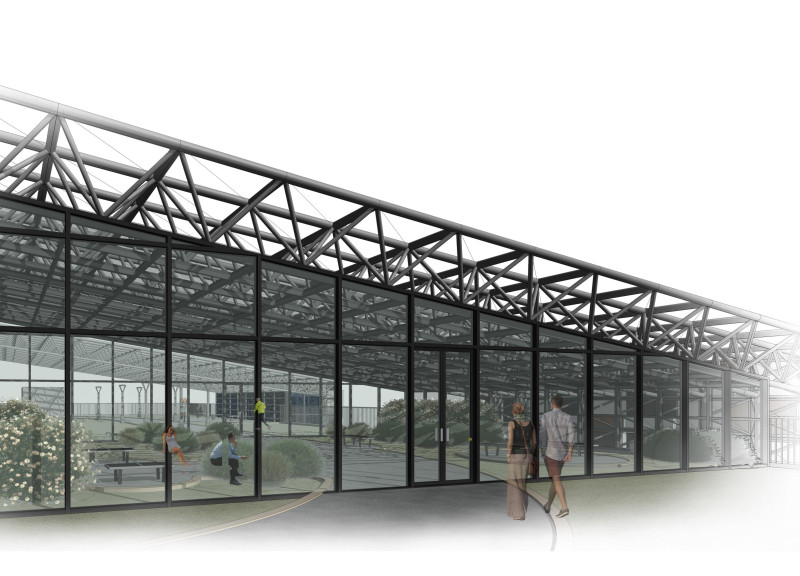5 key facts about this project
### Overview
Located in Cesis, Latvia, the Mango Vinyl Hub project aims to convert an abandoned tin-foil factory into a multidisciplinary creative center. The design integrates the building's historical context while serving as a functional space for various artistic practices. The project intends to cultivate a vibrant atmosphere that draws both local and international artists, tourists, and creatives, encouraging collaboration and innovation in the arts and technology sectors.
### Spatial Composition
The interior layout is meticulously designed to accommodate a diverse range of creative activities. Key features include a community center and auditorium for workshops and performances, as well as studios tailored for artists, musicians, and dancers. The incorporation of technology training and computer development facilities reflects a commitment to blending artistic endeavors with modern advancements. Floor plans depict a segmented yet connected arrangement, with a reception area, café, studios, and exhibition space on the first floor, while the second floor expands to include additional creative studios, fostering an innovative environment.
### Material Selection and Structural Design
The architectural approach to materiality emphasizes a modern aesthetic that remains cognizant of the site’s historical background. Notable materials incorporate 3form Crystal Clear panels for transparency and natural light access, alongside alder and ash wood, which add warmth to the contemporary design. A space frame structure of steel supports expansive open areas while ensuring visual connectivity between indoor and outdoor spaces. This careful selection not only enhances functionality and appearance but also establishes a dialogue with Cesis’s architectural heritage.
Unique design elements include highly adaptable exhibition areas that facilitate a variety of events and workshops through movable panels. Additionally, landscaped outdoor areas surrounding the building promote social interaction and community engagement, further enhanced by integrated dining and leisure spaces. The design prioritizes community involvement, creating an ecosystem that supports both artistic and local economic initiatives.






















